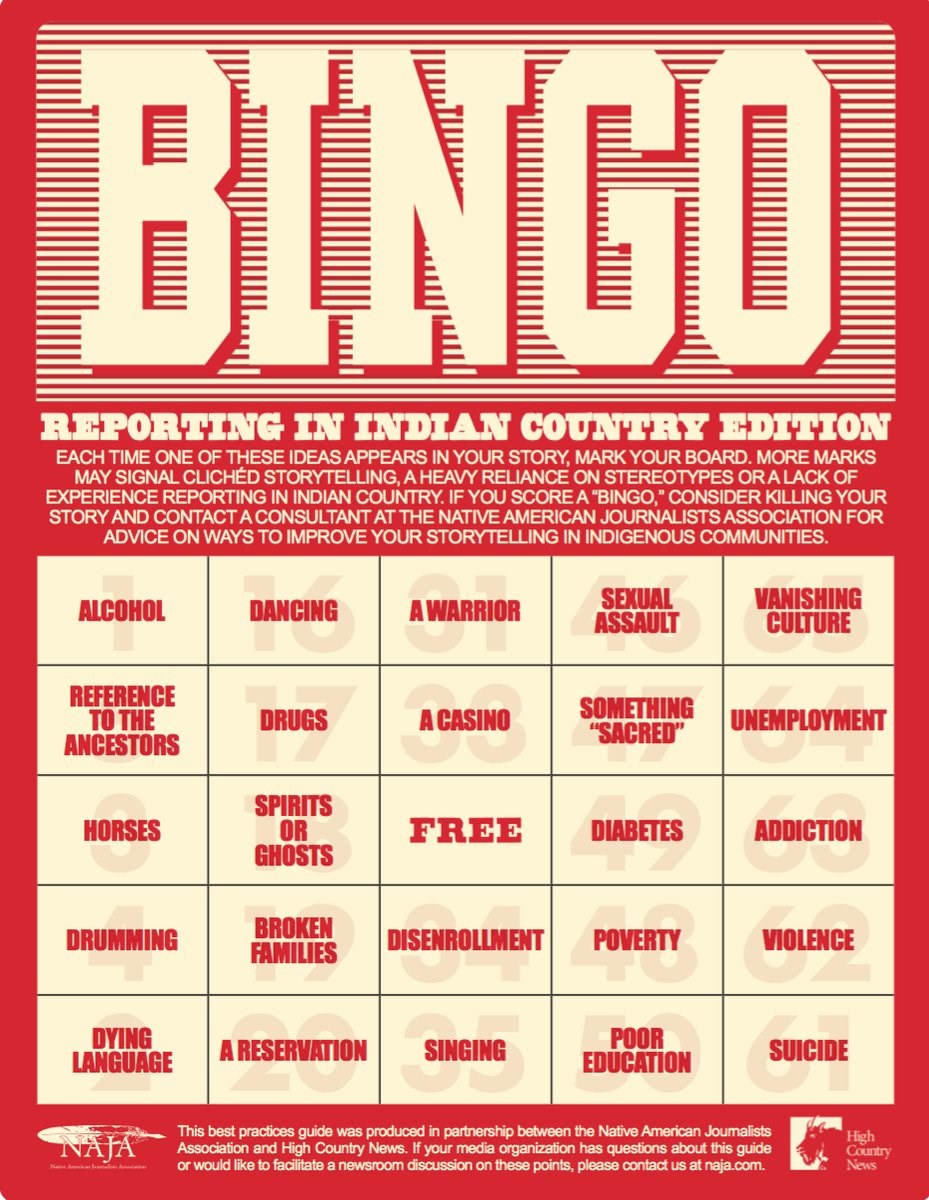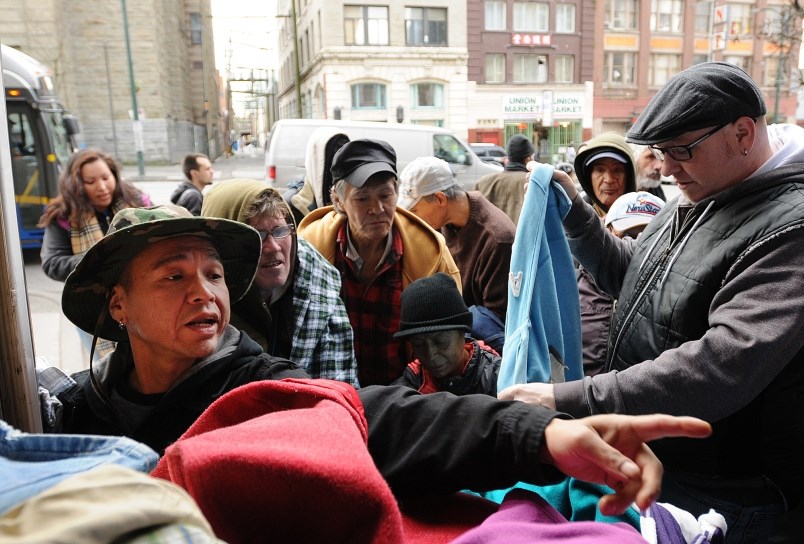Earlier this month, the Native American Journalists Association created what it called âa new toolâ for newsrooms covering Indigenous communities.
That tool is a bingo card.
Say what?
Indulge me here as I explain what is behind the associationâs purpose, which is very much applicable to Canada, particularly Â鶹´«Ã½Ó³»and the rest of the region. Yes, the bingo card is a real thing. Itâs not, however, filled with numbers, but clichés and stereotypes of Indigenous people.

Bingo squares include words such as poverty, addiction, drugs, alcohol and suicide. âVanishing cultureâ and âdying languageâ also appear on the board, as does âpoor educationâ and âbroken families.â If a reporter has one of these words or phrases in his or her copy, that reporter has to mark that square.
You probably know where this is going â yes, the more squares a reporter fills, the better chance the reporter scores a bingo. And, according to the association, if a reporter scores a bingo, âconsider killing your story and contact a consultant at the Native American Journalists Association for advice on ways to improve your storytelling in Indigenous communities.â
Hereâs a quote I found in a release from the association. It can be attributed to Tristan Ashone, the associationâs vice president.
âBecause news organizations often refuse to commit time, energy or resources to covering Indigenous communities in real or meaningful ways, coverage is often shallow and formulaic. The bingo board is designed to draw attention to stereotypes and cultural bias reporters employ when framing their stories. Itâs the responsibility of journalists to combat clichés in order to ensure that information is accurate, fair and thorough.â
I tell you all this because Iâm about to score a bingo with the sentences Iâm going to write to finish this piece. Such a âwin,â though, is unavoidable when discussing the topic of homelessness among Indigenous people in Â鶹´«Ã½Ó³»and across the region.
Yesterday, the Metro Â鶹´«Ã½Ó³»agency released a report on the 2017 homeless count that specifically pulled data on Aboriginal peoples. The news is not good. It never has been good in the couple of decades that Iâve followed this topic â Aboriginal peoples account for one-third (34 per cent) of the homeless in the region, despite representing only 2.5 per cent of the population.
Itâs the highest proportion ever recorded.
In real numbers, thatâs 746 people out of 3,605 counted across the region over one 24-hour period in March.
But thereâs likely more, as the reportâs authors concluded: âIt is important to point out that this count only addressed the most acute form of homelessness â those individuals in shelters and on the street over one 24-hour period â and is therefore very conservative in that it fails to take into consideration those individuals who were simply not counted and those who are at-risk of becoming homeless. One can speculate that the actual number of Aboriginal peoples who are homeless or at risk of being homeless is extreme and much higher than actually reported.â
The reasons for homelessness include poverty, addiction, broken families, poor education, intergenerational trauma related to colonization and the residential school system, unemployment, racism â bingo! â and a lack of housing, where tenants have access to health care and counselling.
Year after year, the story never changes. When the percentage of homeless people counted on the street was 30 per cent in 2013, I got to the numbers. At the time, he was chairperson of the Aboriginal Homelessness Steering Committee.
He was troubled by the numbers then. That concern hasnât diminished in 2017.
âThose numbers are people, and weâve got to be able to house them,â said Stewart, an architect and chairperson of the provincial Aboriginal Homelessness Committee, who continues to implore all three levels of government to build and enable more housing. âWe need more safe, affordable housing, we need social housing, we need a federal government that has the political will to put the National Housing Act back on the table.â
I mentioned the bingo card and he agreed the media focuses too much on negative stories about Indigenous people. But, he said, stories that shine the light on homelessness have to be told because the crisis needs attention.
Itâs just, he added, that this canât be the only story told about Aboriginal peoples. Reporters have to look beyond the doom and gloom so often associated to the community. Heâs right, and I heard that loud and clear while reporting and writing a series I did last year called
I like to think, said the white guy, there was some good news in there â the Metis high school valedictorian going to college, the Â鶹´«Ã½Ó³»police officer from the Namgis First Nation sharing his challenging upbringing to recruits, the Musqueam âknowledge keeperâ educating students about the ways of Coast Salish people, the three elders who continue to inspire and lead in their communities.
Itâs was refreshing to write these stories.
But today, as the homeless statistics revealed, the news is not good. Tomorrow, Stewart hopes it gets better.
âYou canât focus on all the bad news all the time but, for media, it seems like good news doesnât sell,â he said as we wrapped up our conversation. âIt would be nice to have balance. Thereâs lots of good stories out there, too.â
That bingo card, it appears, is a work in progress.
@Howellings



